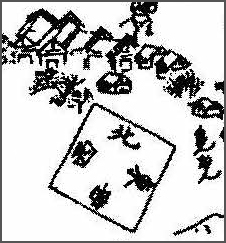https://databaseworldkigo.blogspot.jp/2009/10/camel-dromedary.html
:::::::::::::::::::::::::::::::::::::::::::::::::::::::::::::::::::::::::::::::::::::::::::::::::::::
Japan
rakuda らくだ【駱駝】ラクダ camel
hitokobu rakuda ひとこぶらくだ an Arabian camel, dromedary
futakabu rakuda ふたこぶらくだ a Bactrian camel
At the famous sand dunes in Tottori 鳥取砂丘 we have some camels for the tourists.

青葉風らくだと共に砂丘行く
aobakaze rakuda to tomo ni sakyuu yuku
wind in the green leaves -
together with the camels
we walk the sand dunes
Motobayashi Kazuko 元林和子
. . . CLICK here for Japanese CAMEL Photos in Tottori sand dunes !

. . . CLICK here for more Photos !
- - - - - Rakuda no zu - Utagawa Kuniyasu
- quote -
tagawa Kuniyasu created a diptych print entitled Rakuda no zu (A camel) in 1824, depicting a show held in August of that year in Nishi-Ryogoku, Edo (Tokyo). The following is what is written in the left one:
It is well known to scholars of Dutch knowledge that processed urine of a camel is a miracle medicine to cure a person in critical condition. If a child puts this picture up and always takes a look at it, it will help improve the condition of rashes and smallpox, and an evil being will disappear from the child's mind. Thunder monsters are so fearful of camels that a thunder will never hit where a camel is present. Therefore, the Dutch use a picture of a camel as a charm to protect them from thunders.
Camels were put up on display usually with Japanese people dressed in Chinese clothes or foreign clothes to create an exotic atmosphere. Whatever animal they were showing, it was important to create a certain foreign feeling for the show. Chinese and Western images were most preferred, but the word such as tenjiku (old term for India) and Saiho (it really means the western land, but also means the heaven in Buddhism) were also frequently used for these shows. Furthermore, the use of the names of various long-believed icons, such as Benten (the godess of fortune), Ten-nin (a heavenly being), Daikoku (the god of wealth), and Wagoshin (the god of conjugal harmony) enhanced the idea that these animals were indeed holy and would bring some lucks.
In these animal show prints, besides the urine of camels, the excrement of elephants, feathers of cassowaries, and fur of donkeys were also mentioned as medicine and charms. Show proprietors may have encouraged these ideas to lure larger audiences.
- source : rakugo.com/library -
- quote -
In 1821, a camel was brought by a Dutch ship and became a huge boom. ... It is said that this camel was exhibited in Ryogoku Hirokoji 両国広小路 in Edo and too many people gathered to see it. As indicated by comments such as "The feeling of touching the camel was like touching a carpet," some people went to touch it.
- source : ndl.go.jp/nichiran-
. Welcome to Edo 江戸 ! .
.................................................................................
:::::::::::::::::::::::::::::::::::::::::::::::::::::::::::::::::::::::::::::::::::::::::::::::::::::
Japan
rakuda らくだ【駱駝】ラクダ camel
hitokobu rakuda ひとこぶらくだ an Arabian camel, dromedary
futakabu rakuda ふたこぶらくだ a Bactrian camel
At the famous sand dunes in Tottori 鳥取砂丘 we have some camels for the tourists.

青葉風らくだと共に砂丘行く
aobakaze rakuda to tomo ni sakyuu yuku
wind in the green leaves -
together with the camels
we walk the sand dunes
Motobayashi Kazuko 元林和子
. . . CLICK here for Japanese CAMEL Photos in Tottori sand dunes !

. . . CLICK here for more Photos !
- - - - - Rakuda no zu - Utagawa Kuniyasu
- quote -
tagawa Kuniyasu created a diptych print entitled Rakuda no zu (A camel) in 1824, depicting a show held in August of that year in Nishi-Ryogoku, Edo (Tokyo). The following is what is written in the left one:
It is well known to scholars of Dutch knowledge that processed urine of a camel is a miracle medicine to cure a person in critical condition. If a child puts this picture up and always takes a look at it, it will help improve the condition of rashes and smallpox, and an evil being will disappear from the child's mind. Thunder monsters are so fearful of camels that a thunder will never hit where a camel is present. Therefore, the Dutch use a picture of a camel as a charm to protect them from thunders.
Camels were put up on display usually with Japanese people dressed in Chinese clothes or foreign clothes to create an exotic atmosphere. Whatever animal they were showing, it was important to create a certain foreign feeling for the show. Chinese and Western images were most preferred, but the word such as tenjiku (old term for India) and Saiho (it really means the western land, but also means the heaven in Buddhism) were also frequently used for these shows. Furthermore, the use of the names of various long-believed icons, such as Benten (the godess of fortune), Ten-nin (a heavenly being), Daikoku (the god of wealth), and Wagoshin (the god of conjugal harmony) enhanced the idea that these animals were indeed holy and would bring some lucks.
In these animal show prints, besides the urine of camels, the excrement of elephants, feathers of cassowaries, and fur of donkeys were also mentioned as medicine and charms. Show proprietors may have encouraged these ideas to lure larger audiences.
- source : rakugo.com/library -
- quote -
In 1821, a camel was brought by a Dutch ship and became a huge boom. ... It is said that this camel was exhibited in Ryogoku Hirokoji 両国広小路 in Edo and too many people gathered to see it. As indicated by comments such as "The feeling of touching the camel was like touching a carpet," some people went to touch it.
- source : ndl.go.jp/nichiran-
. Welcome to Edo 江戸 ! .
.................................................................................



































